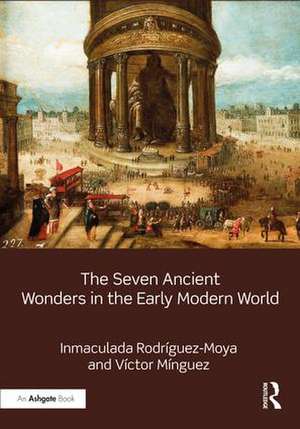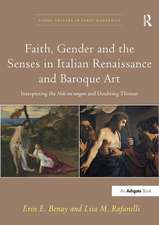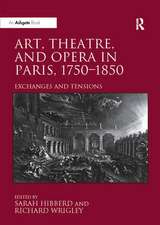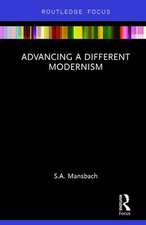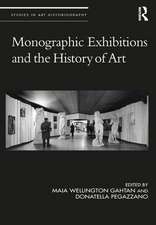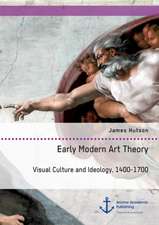The Seven Ancient Wonders in the Early Modern World
Autor Inmaculada Rodríguez-Moya, Víctor Mínguezen Limba Engleză Hardback – 27 mar 2017
| Toate formatele și edițiile | Preț | Express |
|---|---|---|
| Paperback (1) | 312.32 lei 3-5 săpt. | +25.97 lei 10-14 zile |
| Taylor & Francis – mai 2019 | 312.32 lei 3-5 săpt. | +25.97 lei 10-14 zile |
| Hardback (1) | 1122.62 lei 6-8 săpt. | |
| Taylor & Francis – 27 mar 2017 | 1122.62 lei 6-8 săpt. |
Preț: 1122.62 lei
Preț vechi: 1369.04 lei
-18% Nou
Puncte Express: 1684
Preț estimativ în valută:
214.81€ • 224.88$ • 177.74£
214.81€ • 224.88$ • 177.74£
Carte tipărită la comandă
Livrare economică 05-19 aprilie
Preluare comenzi: 021 569.72.76
Specificații
ISBN-13: 9781472467287
ISBN-10: 1472467280
Pagini: 290
Ilustrații: 170 Halftones, black and white; 170 Illustrations, black and white
Dimensiuni: 174 x 246 x 20 mm
Greutate: 0.84 kg
Ediția:1
Editura: Taylor & Francis
Colecția Routledge
Locul publicării:Oxford, United Kingdom
ISBN-10: 1472467280
Pagini: 290
Ilustrații: 170 Halftones, black and white; 170 Illustrations, black and white
Dimensiuni: 174 x 246 x 20 mm
Greutate: 0.84 kg
Ediția:1
Editura: Taylor & Francis
Colecția Routledge
Locul publicării:Oxford, United Kingdom
Cuprins
CONTENTS
ACKNOWLEDGEMENTS
PROLOGUE. Renaissance, Apocalypse and Wonders.
BIBLIOGRAPHY
INDEX OF ILLUSTRATIONS
ACKNOWLEDGEMENTS
PROLOGUE. Renaissance, Apocalypse and Wonders.
- THE INVENTION OF THE WONDERS. Characteristics of the wonders. The geography of the wonders. The classical and medieval lists. The Renaissance and Baroque taste for lists. The artistic series. The contemporary wonders.
- THE COLOSSUS OF RHODES. The myth of the Giant and its artistic depictions. A Colossus on the island of Rhodes. Imperial Colossus. Humanist evocations, between narrative and myth. The Baroque and the ephemeral Colossus. The last Baroque Giant, the Ribera Colossus. The artistic continuity of the Colossus.
- THE LIGHTHOUSE OF ALEXANDRIA. The city of Alexandria. The story and myth of the lighthouse in Antiquity. The lighthouse in medieval times: Islamic and Christian revivals. Artistic evocations in modern culture. Recreations in Enlightenment and French Revolution architecture. Skyscrapers as lighthouses.
- THE TEMPLE OF ARTEMIS AT EPHESUS. The legendary foundation of the city. The first temples of Diana. The fire and reconstruction. Ephesus under Rome. Images in Antiquity. Christianity at Ephesus. Renaissance and Baroque reconstructions. The destruction of the temple and its fame.
- THE MAUSOLEUM OF HALICARNASSUS. Mausoleum and Artemisia II of Caria. Architecture and sculpture. The mausoleum reborn. A new Artemisia: Catherine de Medici. She was his tomb.
- THE STATUE OF JUPITER AT OLYMPIA. Grandeur and majesty. Phidias. The medieval form of divine majesty. Jupiter and the image of power. Ingres and the Olympian-style Napoleon.
- THE HANGING GARDENS OF BABYLON. The lament of the banished. Paradises lost. The excavation of Babylon. From Semiramis to Nebuchadnezzar II. The myth of the Tower of Babel in the Renaissance. Baroque evocations of the Hanging Gardens. Saint Germain at Laye, Schönbrunn and Sanssouci.
- THE PYRAMIDS OF EGYPT. The birth of Egyptomania. Obelisks in Rome. Horapollo and the Renaissance fascination for hieroglyphics. Symbolic and Kircherian worlds. Pyramids and American archaeology. Pyramid-shaped mausoleums in the Baroque period, the Enlightenment and utopian architecture. Napoleon and the beginning of Egyptology. Vivant Denon at Thebes. Orientalism.
- EL ESCORIAL. A NEW WONDER IN THE RENAISSANCE. Idea and construction. The myth of the Eighth Wonder. The construction of El Escorial. The fame of the Eighth Wonder. Phillip IV and El Escorial. The destruction of 1671.
BIBLIOGRAPHY
INDEX OF ILLUSTRATIONS
Notă biografică
Inmaculada Rodríguez-Moya is Assistant Professor in the University Jaume I, Spain. Her research has followed four lines of investigation: Iconography of Power, Colonial Art, Emblem Studies and Urbanism History. That research has been published in the form of two peer-reviewed and awarded monographs: La Mirada del virrey (2003) and El retrato del poder en México, 1781–1867 (2006), seven co-authored monographs, including Himeneo en la corte (2013), along with edited volumes, articles and contributions.
Víctor Mínguez is Full Professor in the University Jaume I, Spain. His research has followed three main lines of investigation: Images of Power, Emblematic Art and Latin American Art. His main research monographs are: Los reyes distantes (1995), Los reyes solares (2001) and La invención de Carlos II (2013); and, with Inmaculada Rodríguez-Moya, Himeneo en la Corte (2013) and Napoleón y el espejo de la Antigüedad (2014).
Víctor Mínguez is Full Professor in the University Jaume I, Spain. His research has followed three main lines of investigation: Images of Power, Emblematic Art and Latin American Art. His main research monographs are: Los reyes distantes (1995), Los reyes solares (2001) and La invención de Carlos II (2013); and, with Inmaculada Rodríguez-Moya, Himeneo en la Corte (2013) and Napoleón y el espejo de la Antigüedad (2014).
Descriere
This monograph is a study of the artistic production that formed part of the various lists of the Seven Wonders that lasted beyond Antiquity and were recovered during the Renaissance and Baroque periods. The study focuses in depth on the way they were evoked in modern artistic culture and the importance they had at European courts, linked to monarchs and princes as an image of power.
